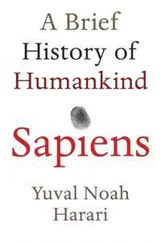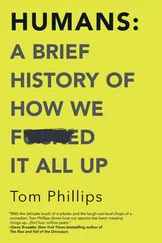Epidemics continued to kill tens of millions of people well into the twentieth century. In January 1918 soldiers in the trenches of northern France began dying in their thousands from a particularly virulent strain of flu, nicknamed ‘the Spanish Flu’. The front line was the end point of the most efficient global supply network the world had hitherto seen. Men and munitions were pouring in from Britain, the USA, India and Australia. Oil was sent from the Middle East, grain and beef from Argentina, rubber from Malaya and copper from Congo. In exchange, they all got Spanish Flu. Within a few months, about half a billion people – a third of the global population – came down with the virus. In India it killed 5 per cent of the population (15 million people). On the island of Tahiti, 14 per cent died. On Samoa, 20 per cent. In the copper mines of the Congo one out of five labourers perished. Altogether the pandemic killed between 50 million and 100 million people in less than a year. The First World War killed 40 million from 1914 to 1918. 10
Alongside such epidemical tsunamis that struck humankind every few decades, people also faced smaller but more regular waves of infectious diseases, which killed millions every year. Children who lacked immunity were particularly susceptible to them, hence they are often called ‘childhood diseases’. Until the early twentieth century, about a third of children died before reaching adulthood from a combination of malnutrition and disease.
During the last century humankind became ever more vulnerable to epidemics, due to a combination of growing populations and better transport. A modern metropolis such as Tokyo or Kinshasa offers pathogens far richer hunting grounds than medieval Florence or 1520 Tenochtitlan, and the global transport network is today even more efficient than in 1918. A Spanish virus can make its way to Congo or Tahiti in less than twenty-four hours. We should therefore have expected to live in an epidemiological hell, with one deadly plague after another.
However, both the incidence and impact of epidemics have gone down dramatically in the last few decades. In particular, global child mortality is at an all-time low: less than 5 per cent of children die before reaching adulthood. In the developed world the rate is less than 1 per cent. 11This miracle is due to the unprecedented achievements of twentieth-century medicine, which has provided us with vaccinations, antibiotics, improved hygiene and a much better medical infrastructure.
For example, a global campaign of smallpox vaccination was so successful that in 1979 the World Health Organization declared that humanity had won, and that smallpox had been completely eradicated. It was the first epidemic humans had ever managed to wipe off the face of the earth. In 1967 smallpox had still infected 15 million people and killed 2 million of them, but in 2014 not a single person was either infected or killed by smallpox. The victory has been so complete that today the WHO has stopped vaccinating humans against smallpox. 12
Every few years we are alarmed by the outbreak of some potential new plague, such as SARS in 2002/3, bird flu in 2005, swine flu in 2009/10 and Ebola in 2014. Yet thanks to efficient counter-measures these incidents have so far resulted in a comparatively small number of victims. SARS, for example, initially raised fears of a new Black Death, but eventually ended with the death of less than 1,000 people worldwide. 13The Ebola outbreak in West Africa seemed at first to spiral out of control, and on 26 September 2014 the WHO described it as ‘the most severe public health emergency seen in modern times’. 14Nevertheless, by early 2015 the epidemic had been reined in, and in January 2016 the WHO declared it over. It infected 30,000 people (killing 11,000 of them), caused massive economic damage throughout West Africa, and sent shockwaves of anxiety across the world; but it did not spread beyond West Africa, and its death toll was nowhere near the scale of the Spanish Flu or the Mexican smallpox epidemic.
Even the tragedy of AIDS, seemingly the greatest medical failure of the last few decades, can be seen as a sign of progress. Since its first major outbreak in the early 1980s, more than 30 million people have died of AIDS, and tens of millions more have suffered debilitating physical and psychological damage. It was hard to understand and treat the new epidemic, because AIDS is a uniquely devious disease. Whereas a human infected with the smallpox virus dies within a few days, an HIV-positive patient may seem perfectly healthy for weeks and months, yet go on infecting others unknowingly. In addition, the HIV virus itself does not kill. Rather, it destroys the immune system, thereby exposing the patient to numerous other diseases. It is these secondary diseases that actually kill AIDS victims. Consequently, when AIDS began to spread, it was especially difficult to understand what was happening. When two patients were admitted to a New York hospital in 1981, one ostensibly dying from pneumonia and the other from cancer, it was not at all evident that both were in fact victims of the HIV virus, which may have infected them months or even years previously. 15
However, despite these difficulties, after the medical community became aware of the mysterious new plague, it took scientists just two years to identify it, understand how the virus spreads and suggest effective ways to slow down the epidemic. Within another ten years new medicines turned AIDS from a death sentence into a chronic condition (at least for those wealthy enough to afford the treatment). 16Just think what would have happened if AIDS had erupted in 1581 rather than 1981. In all likelihood, nobody back then would have figured out what caused the epidemic, how it moved from person to person, or how it could be halted (let alone cured). Under such conditions, AIDS might have killed a much larger proportion of the human race, equalling and perhaps even surpassing the Black Death.
Despite the horrendous toll AIDS has taken, and despite the millions killed each year by long-established infectious diseases such as malaria, epidemics are a far smaller threat to human health today than in previous millennia. The vast majority of people die from non-infectious illnesses such as cancer and heart disease, or simply from old age. 17(Incidentally cancer and heart disease are of course not new illnesses – they go back to antiquity. In previous eras, however, relatively few people lived long enough to die from them.)
Many fear that this is only a temporary victory, and that some unknown cousin of the Black Death is waiting just around the corner. No one can guarantee that plagues won’t make a comeback, but there are good reasons to think that in the arms race between doctors and germs, doctors run faster. New infectious diseases appear mainly as a result of chance mutations in pathogen genomes. These mutations allow the pathogens to jump from animals to humans, to overcome the human immune system, or to resist medicines such as antibiotics. Today such mutations probably occur and disseminate faster than in the past, due to human impact on the environment. 18Yet in the race against medicine, pathogens ultimately depend on the blind hand of fortune.
Doctors, in contrast, count on more than mere luck. Though science owes a huge debt to serendipity, doctors don’t just throw different chemicals into test tubes, hoping to chance upon some new medicine. With each passing year doctors accumulate more and better knowledge, which they use in order to design more effective medicines and treatments. Consequently, though in 2050 we will undoubtedly face much more resilient germs, medicine in 2050 will likely be able to deal with them more efficiently than today. 19
In 2015 doctors announced the discovery of a completely new type of antibiotic – teixobactin – to which bacteria have no resistance as yet. Some scholars believe teixobactin may prove to be a game-changer in the fight against highly resistant germs. 20Scientists are also developing revolutionary new treatments that work in radically different ways to any previous medicine. For example, some research labs are already home to nano-robots, that may one day navigate through our bloodstream, identify illnesses and kill pathogens and cancerous cells. 21Microorganisms may have 4 billion years of cumulative experience fighting organic enemies, but they have exactly zero experience fighting bionic predators, and would therefore find it doubly difficult to evolve effective defences.
Читать дальше
Конец ознакомительного отрывка
Купить книгу












